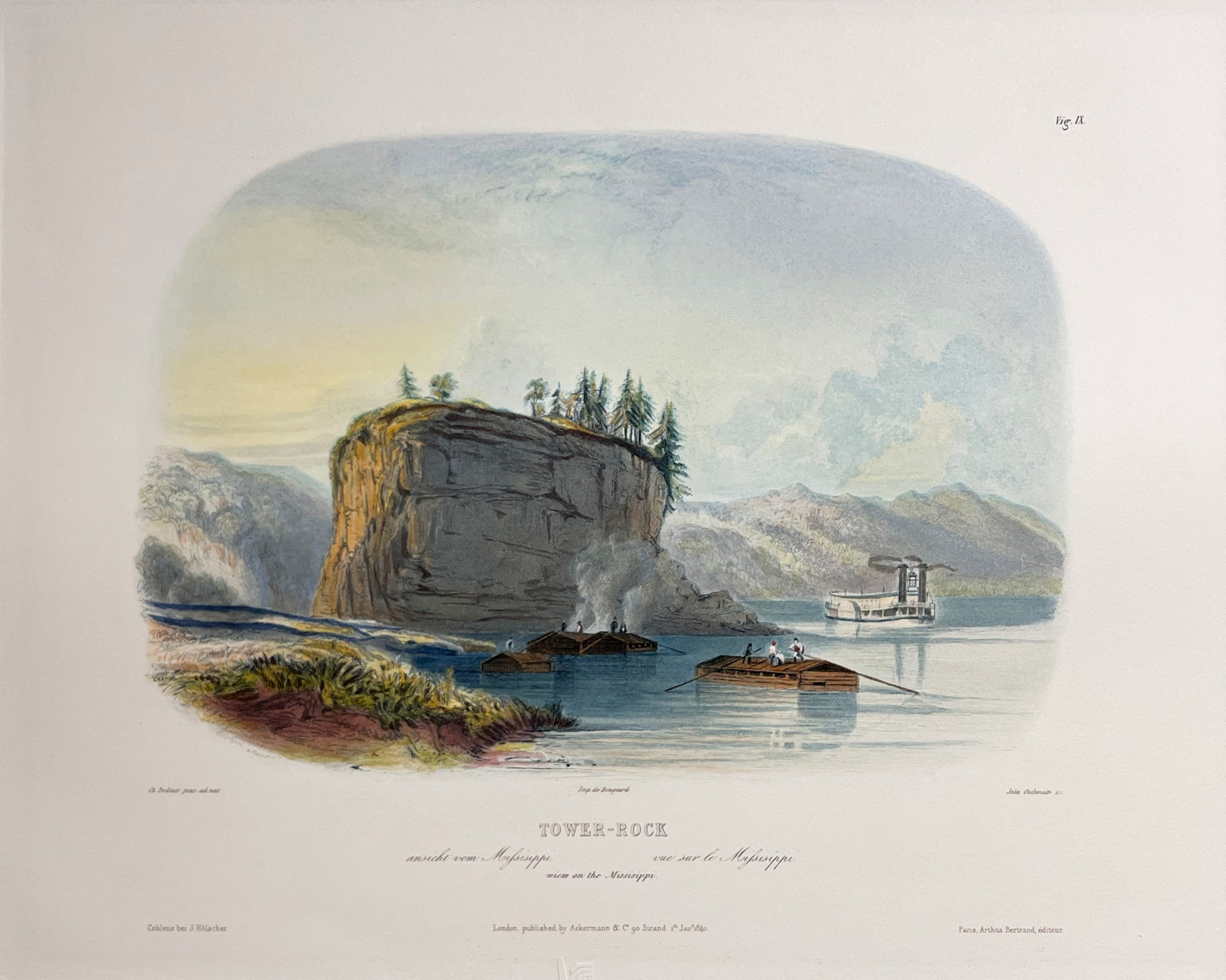5 in stock
Vignette
Pulled from the original steel and copper plates, engraved in Paris between 1836 and 1843 under Karl Bodmer’s direction, after the artist’s own watercolours drawn from nature during the journey.
The engravings are hand-printed in colours, à la poupée, with extensive hand-colouring and some application of gum arabic, in the nineteenth-century manner.
Engraved by John Outhwaite
Printed by Bougeard
Leaving New Harmony on March 16, 1833, Maximilian and his companions embarked on a steamer at Mount Vernon on the morning of the 18th. The ensuing voyage down the Ohio to its junction with the Mississippi required the better part of the next two days. On the Mississippi above the mouth of the Ohio, between the settlements of Cape Girardeau and St. Genevieve, stood an isolated, drum-like formation in the river known as the Grand Tower, or Tower Rock. Maximilian estimated it to be more than sixty feet high, writing in his journal on March 21 that “Mr. Bodmer sketched the Grand Tower, and found this place highly interesting.”
Beyond this landmark, the travelers passed the old French trading post of Kaskaskia around Noon the following day. They arrived at St. Louis, Missouri, below the mouth of the Missouri River, on the 24th. They remained here through the first week of April while Maximilian, with the help of former explorer William Clark, then serving as Superintendent of Indian Affairs for the WesternTribes, completed plans for the subsequent voyage up the Missouri to the American Fur Company’s outposts in the interior.
The view of Tower Rock which later appeared in the European atlas included depictions of the various types of craft then operating on the Mississippi, indicating a lively trade in the products of the country being carried on at that time.
Text by David Hunt, Director, Stark Museum, Orange, Texas, USA

